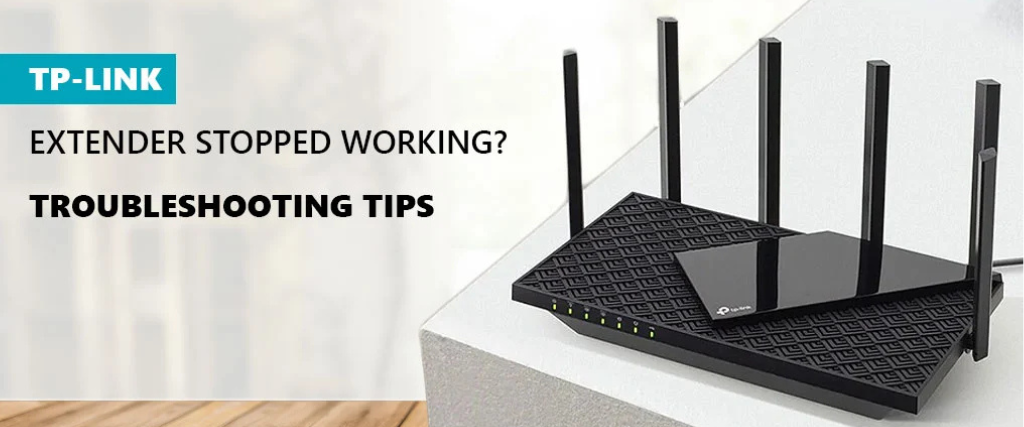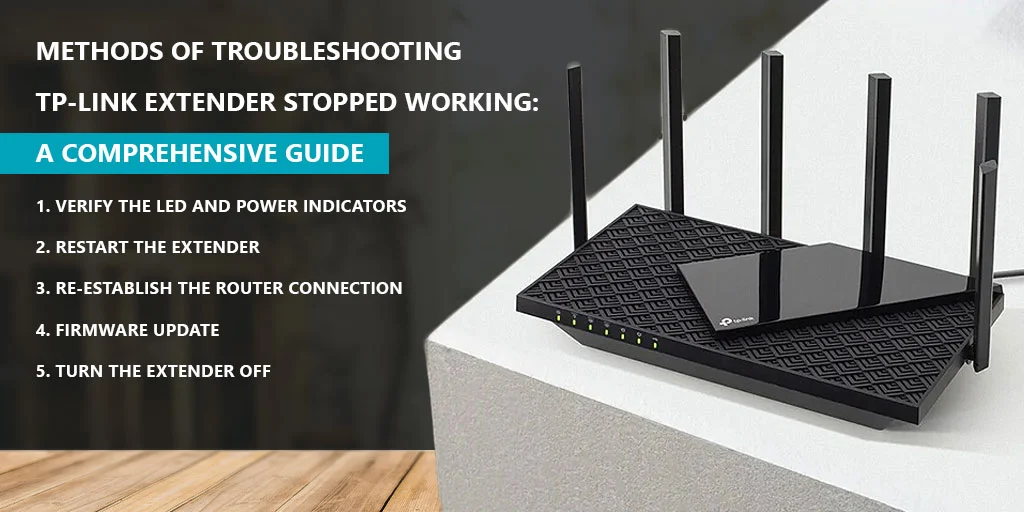
A TP-Link WiFi extender is a useful device that improves overall connectivity, removes dead zones, and increases the coverage of your wireless network. However, it has problems just like any other technology. You’re not the only one wondering, “Why has my TP-Link extender stopped working?” This issue is common among users and is typically resolved with simple troubleshooting.
This blog will discuss the frequent causes of TP-Link Extender Stopped Working, how to diagnose the issue, and solutions to restore network functionality.
Reasons Why TP-Link Wi-Fi Extender Is Causing Problems
1. Problems with the Power Supply
A power outage can occasionally be the cause of an extender that is not responding. Make sure that the power LED is on and the extender is hooked into a functional outlet.
2. The Router’s Connection was lost
The extender won’t transmit any signals if it loses connection to the primary router. This might be the result of firmware updates, router resets, or modifications to the router’s configuration, such as the password or SSID.
3. Outdated Firmware
Performance problems, such as disconnections or an extender that won’t work at all, can result from using outdated firmware. Updates are frequently released by TP-Link to address issues and enhance compatibility.
4. Incorrect Positioning
The signal from your primary router must be within range of your extender. It won’t be able to connect or efficiently expand your network if it is too far away.
5. Hardware Malfunction or Overheating
TP-Link extenders have the potential to overheat like any other electronic device, particularly when utilized in a hot or confined space. Your TP-Link extender not working because of hardware damage from prolonged overheating.
6. Conflicts with IP Addresses
Connectivity problems may arise from an IP conflict with another network device, which frequently results in situations where your TP-Link WiFi extender interferes with internet access.
Methods of Troubleshooting TP-Link Extender Stopped Working: A Comprehensive Guide

1. Verify the LED and Power Indicators
Validate that the extender is on and plugged in correctly. Examine the LED lights:
- A solid power light is ideal.
- Depending on the model, the signal light should be either amber or green.
- If it is linked to the router, the RE (Range Extender) light ought to be on.
- Release the device, wait ten seconds, and plug it back in if none of these lights are on.
2. Restart the Extender
Many short-term problems can be fixed with a simple reboot:
- Remove the extender’s plug.
- Hold off for 30 seconds.
- Wait for the lights to steady after plugging it back in.
3. Re-establish the Router Connection
Try reconnecting your TP-Link extender to the router if it isn’t functioning:
- Press your router’s WPS button.
- Press your extender’s WPS button within two minutes.
- Await the stabilization of the RE light.
As an alternative, use a web browser to access the extender (often at tplinkrepeater.net) and follow the setup instructions to connect it manually.
4. Firmware Update
Network instability or the TP-Link extender ceasing to function can be caused by outdated firmware:
- Go to the official TP-Link website.
- Get the most recent firmware for the model of your extender.
- Navigate to Firmware Update on the extender’s admin interface.
- Install the updated firmware after uploading it.
- During the update procedure, take care not to unplug the extender.
5. Turn the Extender Off
Try a factory reset if nothing else resolves the issue:
- Find the Reset button, which is often a tiny hole.
- Using the paperclip, press and hold it.
- Hold off until the extender reboots and goes back to its original settings.
- Reconfigure it from the beginning.
6. Verify Placement and Interference
Verify the position of the extender:
- Halfway between the dead zone and your router.
- Stay away from potentially interfering electronics, including Bluetooth devices, cordless phones, and microwaves.
Still, the TP-Link extender is not working: Extra Advice
If, despite all these attempts, your TP-Link Extender stops working:
- To rule out device-specific problems, try connecting a different device to the extender’s network.
- Examine your primary router. Your extender won’t work properly either if it’s not broadcasting correctly.
- Examine whether your network is filtering MAC addresses. The extender can be blocked by it.
- Sometimes the TP-Link WiFi extender isn’t the problem; instead, your router or ISP may be the source of the problem.
Final Thoughts
Technical problems can be annoying, particularly if they interfere with your ability to access the internet. Don’t replace your TP-Link extender right away if it stops working. It can often be revived with a little troubleshooting.
You may save time, money, and worry by taking the time to identify the source, whether it’s a power problem, out-of-date firmware, or improper location. If you follow the above commands, you should be able to fix the delinquent in no time.
FAQs
How can I determine whether my TP-Link extender is correctly connected?
Verify the signal LED; a solid green or amber light often means that your extender and the primary router are connected.
Is it probable to have more than one TP-Link extender in one house?
Yes, you can use more than one extender, but to prevent interference and guarantee even coverage throughout your house, they shouldn’t be placed too close to one another.
Why is there no internet while my TP-Link extender indicates that it is connected?
This frequently means that there is an issue with your primary router or DNS configuration. Check to see if the router itself has internet access after restarting both devices.
Do my router and TP-Link extender have to share a WiFi channel?
Not always. To guarantee optimum performance and compatibility, the majority of extenders automatically sync to the router’s channel during setup.
